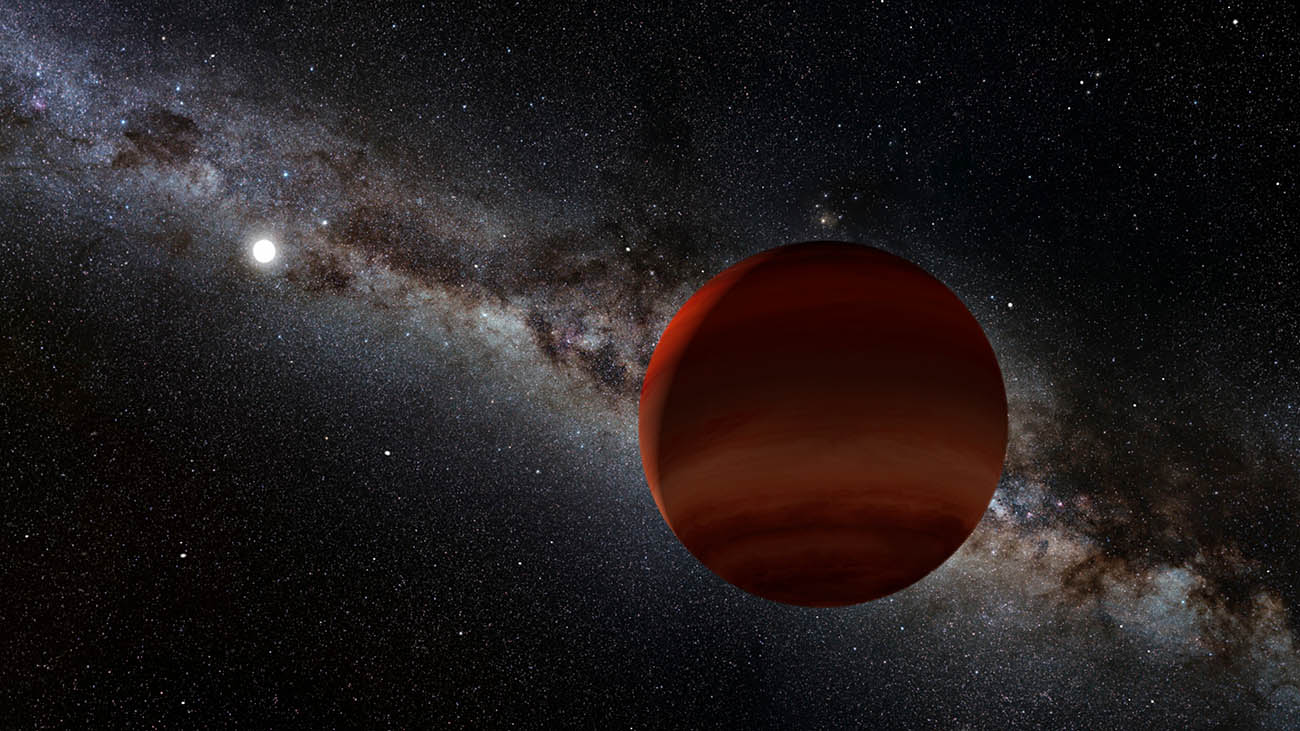NOIRLab: Cool New Worlds Found in Our Cosmic Backyard

Artist’s impression of one of this study’s superlative discoveries, the oldest known wide-separation white dwarf plus cold brown dwarf pair. The small white orb represents the white dwarf (the remnant of a long-dead Sun-like star), while the brown/orange foreground object is the newly discovered brown dwarf companion. This faint brown dwarf was previously overlooked until it was spotted by citizen scientists, because it lies right within the plane of the Milky Way. Credit: NOIRLab/NSF/AURA/P. Marenfeld Acknowledgement: William Pendrill
Citizen scientists and NOIRLab facilities key to discovery of almost 100 nearby cool brown dwarfs
How complete is our census of the Sun’s closest neighbors? Astronomers using NSF’s NOIRLab facilities and a team of data-sleuthing volunteers participating in Backyard Worlds: Planet 9, a citizen science project, have discovered roughly 100 cool worlds near the Sun — objects more massive than planets but lighter than stars, known as brown dwarfs. Several of these newly discovered worlds are among the very coolest known, with a few approaching the temperature of Earth — cool enough to harbor water clouds.
Discovering and characterizing astronomical objects near the Sun is fundamental to our understanding of our place in, and the history of, the Universe. Yet astronomers are still unearthing new residents of the Solar neighborhood. A remarkable breakthrough was announced today, with the discovery of roughly 100 cool brown dwarfs near the Sun [1]. The new Backyard Worlds discoveries bridge a previously empty gap in the range of low-temperature brown dwarfs, identifying a long-sought missing link within the brown dwarf population.
“These cool worlds offer the opportunity for new insights into the formation and atmospheres of planets beyond the Solar System,” said Aaron Meisner from the National Science Foundation’s NOIRLab and the lead author of the research paper. “This collection of cool brown dwarfs also allows us to accurately estimate the number of free-floating worlds roaming interstellar space near the Sun.”
